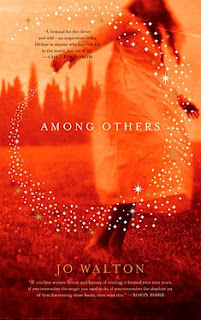The Night Sessions by
Ken MacLeod
Published :
Orbit, 2008
Awards Won :
British Science Fiction Association Award
The Book :
“After the devastation
of the Faith Wars (or Oil Wars, as they are also called), the world went
through what is known as the Great Rejection. Now, religious faith is swept under the rug, and all
officials are required to feign non-cognizance of any religious affiliation in
the citizens they serve. When a man
dies in a bombing in Edinburgh, Detective Inspector Adam Ferguson suspects that
the cause might be related to something he officially doesn’t know—the murdered
man was a parish priest.
Ferguson pursues the
case with his robotic partner, another legacy of the Faith Wars. When the robotic war machine partners
of human soldiers gained sentience, people suddenly saw them as highly dangerous. Many of the self-aware robots, such as
Ferguson’s partner, Skulk, were downloaded into the less threatening bodies of
mini-War-of-the-Worlds tripod helper robots. Others maintained their human form, and simply removed
themselves from society. Many
moved up the space elevators into orbit, but hundreds continue to live in
seclusion at a New Zealand creationist park, under the care of a robotics engineer
and fundamentalist Christian, John Richard Campbell. As robotic intelligence, faith, and violent crime collide,
Ferguson searches for truth in a case that continues to grow ever more
strange.” ~Allie
The
Night Sessions was the novel I chose as a prize from WWEnd’s Grand
Master Reading Challenge, which has been a lot of fun so far this year! I’d never read any Ken MacLeod before,
but I was intrigued by the premise—terrorism in a future with self-aware
robots, and with religion almost completely removed from the public sphere.
My Thoughts :
The Night Sessions
was a fairly quick read, and I wished that it could have been longer. With its relatively short length, The Night Sessions tended to focus more
on plot than on characterization or the details of the world building. There’s
much to enjoy in MacLeod’s future world, but I felt as though I only got to see
the parts that were absolutely necessary for the main plot. For instance, the idea of sentient
robots is obviously not a new one, but I enjoyed seeing how they were (or were
not) integrated into society. Robots are very common in the world of The Night Sessions, but they were mostly
only shown in their professional capacities. For instance, Ferguon’s partner Skulk, was the most
developed robotic character, but even he was rarely shown outside of the
context of working on their case.
There’s not very much speculation on robotic psychology, or on how they might
view their human creators, who only accept them if they are inferior and
subservient. There is an obvious
parallel that could be drawn with Christianity here, but the novel doesn’t seem
to travel far down that road.
The basic plot is a detective story, but (thankfully) Ferguson
is not the hotshot, failure, or alcoholic that I’m becoming used to seeing in
these kinds of stories. Instead, he’s
just a pretty decent detective. He drinks moderately, is happily married, and
sees his job as a job, not a validation of himself as a person. However, he does have something of a
dark past that is occasionally mentioned.
Apparently, in the past, the police actively persecuted churches and
religious people. Ferguson regrets the brutality he took part in during those
years, but the details of his past are left a little vague. Since I don’t know
what acts he is guilty of having committed, it’s hard to judge whether he’s a
decent cop who’s done a few bad things or a brutal cop who feels mildly ashamed
of his worst excesses. As a
result, I was left with the impression that I did not understand the character
of Ferguson very deeply.
Like Ferguson, most of the other characters were also
lightly characterized. Though they
were developed only as far as was necessary for the plot, I still appreciated
the different mindsets each character portrayed. Religion (mostly Christianity) is a major factor in the
story, and I liked that MacLeod showed some of the diversity of people of
faith. For instance, John Campbell
is an extreme fundamentalist.
However, while he is occasionally infuriating, he’s not shown as a bad
person. Another Christian character, Grace Mazvabo, was a fairly intelligent,
religious professor. Of course, there are also strongly negative portrayals of
religious faith, mostly of people who turn to violence on the basis of their
beliefs. An interesting added
twist was the idea of robots finding religion, though I wish the mindset of
religious robots could have been more thoroughly explored. Altogether, there was quite a lot
that I enjoyed about The Night Sessions,
but I felt that a lot of interesting implications in the setting and characters
were left unexplored.
My Rating :
3.5/5
I enjoyed reading The
Night Sessions, but I was left wanting more. I wanted to know more about the world MacLeod had begun to
reveal and about the characters that I felt I only barely knew. I liked how MacLeod showed the many
different kinds of people—and robots!—who are drawn to religious faith, but I
wish there could have been more of an exploration of what ideas lead robots or
people toward faith in the first place.
The central mystery was interesting enough, but I would have loved to
see more attention devoted to the many intriguing ideas that were barely
referred to throughout the story. The world, its technology, and its issues
were all very interesting, but I felt like the book was too short to explore
any specific idea in great detail.




